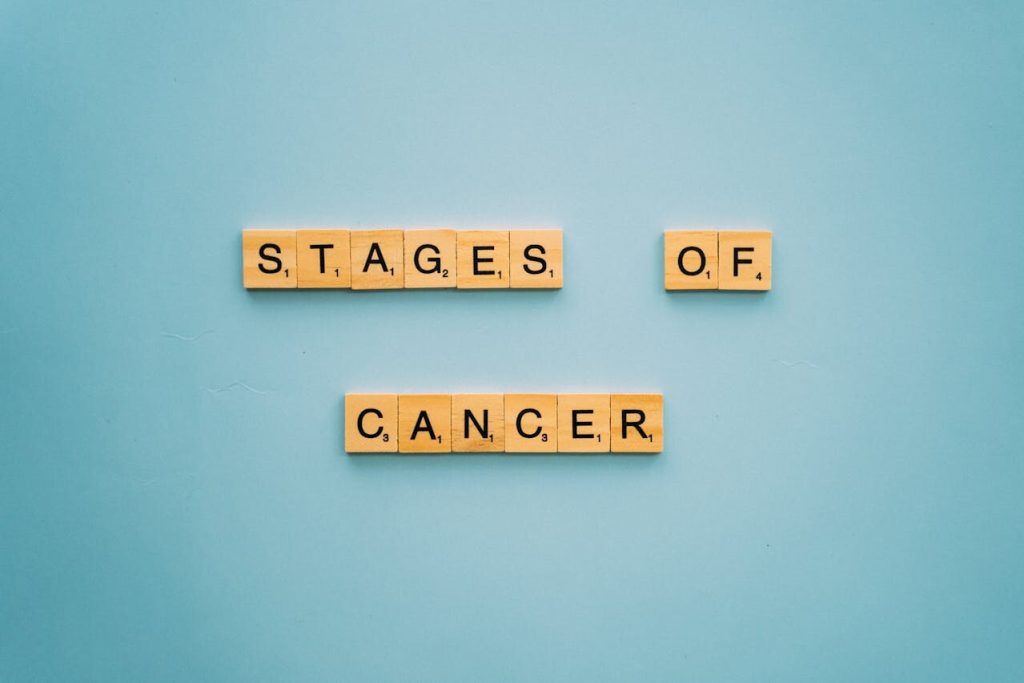Leukemia is a type of blood cancer that affects the production and function of white blood cells. It is a complex disease with diverse subtypes and varied treatment options. To better understand the intricacies of leukemia, researchers have explored the concept of “leukemia dots,” or mutations in the DNA of leukemia cells that can provide insights into disease progression and response to therapy.
The impact of leukemia on individuals and society is significant. According to recent estimates, around 60,530 new cases of leukemia will be diagnosed in the United States in 2021, and approximately 23,100 people will die from the disease. Raising awareness and understanding of leukemia can help improve outcomes and support for those affected by this condition.
Key Takeaways:
- Leukemia is a type of blood cancer that affects the production and function of white blood cells.
- Research on “leukemia dots” can provide insights into disease progression and treatment response.
- Leukemia has a significant impact on individuals and society, with thousands of new cases and deaths each year.
- Raising awareness and understanding of leukemia can improve outcomes and support for patients and their families.
Understanding Leukemia: Symptoms, Types, and Causes
Leukemia is a type of blood cancer that affects the body’s ability to produce healthy blood cells. It is characterized by the rapid growth of abnormal cells in the bone marrow and blood.
The symptoms of leukemia vary depending on the type and stage of the disease. Common symptoms include fatigue, frequent infections, unexplained weight loss, and easy bruising or bleeding. Patients may also experience bone pain or swelling, fever, and night sweats.
There are several types of leukemia, including acute lymphoblastic leukemia (ALL), acute myeloid leukemia (AML), and chronic lymphocytic leukemia (CLL). Each type of leukemia is characterized by the type of blood cells affected and the rate of cell growth.
The causes of leukemia are not fully understood, but certain factors may increase the risk of developing the disease. These include exposure to radiation or certain chemicals, certain genetic disorders, and a weakened immune system.
Diagnosis of leukemia typically involves a combination of blood tests, bone marrow biopsy, and genetic testing. Early detection is key to developing an effective treatment plan and improving patient outcomes.
Understanding Leukemia: Symptoms
Leukemia symptoms can be vague and may not appear until the disease has progressed. Common symptoms include:
- Fatigue
- Frequent infections
- Unexplained weight loss
- Easy bruising or bleeding
- Bone pain or swelling
- Fever or night sweats
Types of Leukemia
There are several types of leukemia:
| Type | Description |
|---|---|
| Acute Lymphoblastic Leukemia (ALL) | This type of leukemia affects lymphoid cells and progresses quickly. It is most common in children. |
| Acute Myeloid Leukemia (AML) | This type of leukemia affects myeloid cells and progresses quickly. It is most common in adults. |
| Chronic Lymphocytic Leukemia (CLL) | This type of leukemia affects lymphoid cells and progresses slowly. It is most common in adults over the age of 60. |
Causes of Leukemia
The exact causes of leukemia are not fully understood, but certain factors may increase the risk of developing the disease. These include:
- Exposure to radiation or certain chemicals
- Genetic disorders
- Weakened immune system
Research into the causes and risk factors of leukemia is ongoing.
Leukemia Diagnosis: Tests and Procedures
Diagnosing leukemia involves a series of tests and procedures that can identify the presence of abnormal white blood cells in the bone marrow and blood. These tests are essential for determining the type of leukemia and creating an effective treatment plan.
A common diagnostic tool is a complete blood count (CBC) that measures the number of red blood cells, white blood cells, and platelets in the blood. Abnormal levels of these cells can indicate leukemia. A bone marrow biopsy may also be performed to analyze the cells in the bone marrow, providing additional information about the leukemia type and stage.
Genetic testing is another crucial element of leukemia diagnosis, as it can identify specific genetic mutations that may impact treatment options. With accurate diagnosis and genetic profiling, healthcare professionals can create personalized treatment plans tailored to the unique needs of each patient.
Childhood Leukemia: Understanding and Treating the Disease
Leukemia is the most common childhood cancer, representing approximately one-third of all childhood cancer cases. Children with leukemia often experience different signs and symptoms than adults, with the disease commonly manifesting as bone pain, fevers, fatigue, and easy bruising or bleeding.
Fortunately, advances in medical technology and treatment options have significantly improved outcomes for children with leukemia. Treatment approaches for childhood leukemia include chemotherapy, radiation therapy, stem cell transplantation, and targeted therapy, among others. However, treatment plans must be personalized to each individual patient, taking into account the type and stage of leukemia, age, and overall health status.
The Cancer Center for Healing understands the unique challenges that children with leukemia and their families face and provides specialized care and support to ensure the best possible outcomes. Dr. Leigh Erin Connealy and her team incorporate holistic treatment modalities, such as nutritional therapy, mind-body therapies, and integrative medicine, in combination with traditional medical treatments, to provide a comprehensive approach to cancer care.
Leukemia in Adults: Treatment Approaches and Considerations
Leukemia treatment in adults involves a range of approaches aimed at targeting cancer cells while minimizing damage to healthy tissues. Treatment options may vary depending on the type and stage of leukemia, as well as individual patient factors.
Chemotherapy: Chemotherapy involves the use of drugs to kill cancer cells. This treatment can be administered orally, intravenously, or by injection, and may be given in cycles with periods of rest in between. While chemotherapy can effectively eradicate cancer cells, it also affects healthy cells, leading to common side effects such as hair loss, nausea, and fatigue.
Radiation therapy: Radiation therapy uses high-energy radiation to kill cancer cells. It can be delivered externally or internally, and may be used alone or in conjunction with other treatments. Side effects of this treatment may include skin irritation, fatigue, and shortness of breath.
Targeted therapy: Targeted therapy involves the use of drugs that specifically target cancer cells, while leaving healthy cells intact. These drugs may be administered orally or intravenously, and may be used alone or in combination with other treatments. Targeted therapy can cause side effects such as skin rash and diarrhea.
Immunotherapy: Immunotherapy involves the use of drugs that stimulate the immune system to attack cancer cells. This treatment can be administered intravenously or orally, and may be used alone or in combination with other therapies. Side effects can include fatigue, fever, and chills.
Stem cell transplantation: Stem cell transplantation involves the replacement of damaged or destroyed bone marrow with healthy stem cells. These stem cells may be obtained from the patient’s own body (autologous transplantation) or from a donor (allogeneic transplantation). This treatment can have serious side effects, such as infections and graft-versus-host disease.
Personalized Treatment Plans
It is important to note that each patient’s experience with leukemia and their treatment needs may differ. As such, treatment plans should be personalized to individual patient factors, including age, overall health, and the type and stage of leukemia. Treatment plans may also change over time as the disease progresses and as new treatment options become available.
Patients with leukemia should work closely with their healthcare team to determine the most appropriate treatment plan for their needs, placing emphasis on open communication and shared decision-making. In addition to medical treatments, supportive care such as pain management, nutritional counseling, and emotional support can also play a key role in improving patient outcomes and quality of life.
Holistic Cancer Care at the Cancer Center for Healing
The Cancer Center for Healing offers a revolutionary approach to cancer care that integrates the best of conventional and holistic therapies to provide personalized treatment plans. Led by Dr. Leigh Erin Connealy, the center combines state-of-the-art medical technologies and expertise with a focus on whole-person healing, including mind, body, and spirit.
| Services Offered: | Nutritional support and counseling | Acupuncture | Mind-body therapies | Integrative medicine |
|---|
The center’s approach to cancer care emphasizes the importance of a healthy and supportive environment in which patients receive compassionate care and cutting-edge treatment options. By integrating the latest research in cancer treatment with holistic practices that promote well-being and healing, the Cancer Center for Healing provides an immersive and comprehensive patient-centered approach to cancer care.
“We believe that each patient deserves a unique approach to their cancer treatment, one that takes into account their individual needs and goals for healing. By combining conventional and integrative therapies, we offer our patients the best possible chance for a successful recovery and optimal quality of life.”
The Cancer Center for Healing is committed to providing the best possible care to cancer patients, with a focus on treating the whole person, and not just the disease. By providing personalized treatments that address all aspects of cancer care, from diagnosis to recovery, the center is at the forefront of a new era in cancer care, one that prioritizes the needs and well-being of patients and their families.
Treatment Advances in Leukemia Research
Recent years have seen significant advancements in the fight against leukemia, with new treatment options offering hope for improved outcomes and quality of life for patients. Some of the most promising treatment approaches involve targeted therapies, immunotherapy, and precision medicine.
Targeted Therapies
Targeted therapies are designed to target specific genetic mutations or proteins that enable leukemia cells to grow and divide. By blocking these pathways, targeted therapies can slow or stop the growth of leukemia cells while sparing healthy cells. Examples of targeted therapies include tyrosine kinase inhibitors, which target an enzyme that plays a role in the growth of certain types of leukemia, and BCL-2 inhibitors, which interfere with a protein that prevents cancer cells from dying.
Immunotherapy
Immunotherapy is a type of cancer treatment that uses the body’s own immune system to fight cancer cells. One type of immunotherapy involves using engineered T cells that are programmed to recognize and attack cancer cells. Another type of immunotherapy, called checkpoint inhibitors, targets proteins on the surface of cancer cells that help them evade detection by the immune system.
Precision Medicine
Precision medicine involves using genetic testing to identify the specific genetic mutations driving a patient’s cancer. By tailoring treatment to the patient’s unique genetic profile, precision medicine offers the potential for more effective and less toxic treatments. For example, patients with certain genetic mutations may benefit from targeted therapies that are specifically designed to block those mutations.
While these treatment options are still being studied and refined, they offer hope for the future of leukemia treatment. For patients with leukemia, staying informed about the latest advances in research can help them make more informed decisions about their treatment options.
Leukemia Prevention: Promoting Healthy Lifestyle Choices
Prevention is an important aspect of reducing the risk of leukemia. Individuals can take steps to promote a healthy lifestyle and avoid exposure to harmful substances.
One way to reduce the risk of leukemia is to avoid exposure to certain chemicals, such as benzene and formaldehyde, which have been linked to an increased risk of the disease. Reducing exposure to radiation, including medical radiation, can also be beneficial.
Maintaining a healthy lifestyle is also crucial. This includes eating a balanced diet, exercising regularly, getting enough sleep, and reducing stress levels. These habits can boost the immune system and improve overall health, which can help reduce the risk of leukemia.
Regular medical check-ups are another important aspect of leukemia prevention. Routine blood tests and physical exams can detect any early signs of the disease and allow for prompt treatment.
Education and awareness also play a vital role in leukemia prevention. By educating themselves and others about the risk factors and symptoms of leukemia, individuals can take proactive steps towards reducing their risk and seeking early diagnosis.
Leukemia Awareness: Spreading Knowledge and Support
Increasing leukemia awareness is vital for promoting early detection, providing support for patients and their families, and funding ongoing research into new treatment options.
“Joining a leukemia awareness campaign or supporting a local advocacy organization is a powerful way to make a difference and show your support for those affected by this disease.”
Leukemia-specific organizations such as the Leukemia and Lymphoma Society and the National Comprehensive Cancer Network provide resources, support, and education for patients and their families, as well as funding for research into new treatment options.
Community initiatives such as charity walks and fundraising events also help to raise awareness and funds for leukemia research. By contributing to these events, individuals can play an active role in supporting those affected by leukemia.
Education and awareness are essential in promoting leukemia prevention. By understanding the risk factors associated with leukemia and adopting healthy lifestyle habits, individuals can reduce their risk of developing this disease.
“Raising awareness about leukemia ensures that more people understand the disease, its symptoms, and the treatment options available. By coming together as a community, we can fight leukemia and work towards a world without blood cancer.”
Schedule a Consultation at the Cancer Center for Healing
If you or a loved one has been diagnosed with leukemia, schedule a consultation at the Cancer Center for Healing in Irvine, CA. Our team, led by Dr. Leigh Erin Connealy, provides personalized and comprehensive care for cancer patients, incorporating both traditional and holistic treatment modalities.
During your consultation, Dr. Connealy will evaluate your medical history, perform a physical exam, and discuss your treatment options with you. Our goal is to develop a customized treatment plan that addresses your unique needs and goals, while maximizing efficacy and minimizing side effects.
Our team of experts includes licensed acupuncturists, nutritionists, and mind-body therapists, who work collaboratively with our medical staff to provide integrative cancer care. We believe that combining evidence-based medical treatments with holistic modalities can lead to better outcomes and improved quality of life for cancer patients.
Contact the Cancer Center for Healing to schedule your consultation today and take the first step towards comprehensive, effective cancer care.
Conclusion
Leukemia is a complex disease that affects individuals of all ages. It is crucial to understand the symptoms, types, and causes of leukemia to ensure early diagnosis and effective treatment. The Cancer Center for Healing in Irvine, CA, offers a holistic approach to cancer care, combining traditional medical treatments with holistic treatment modalities, such as nutrition, acupuncture, mind-body therapies, and integrative medicine. Recent advancements in leukemia research offer hope for improving outcomes and quality of life for patients.
Preventive measures, such as avoiding harmful chemicals and maintaining a healthy lifestyle, can also reduce the risk of leukemia. Leukemia awareness campaigns and advocacy organizations play a significant role in promoting early detection and funding for research. By spreading knowledge and support, we can work towards a future where leukemia is a treatable and manageable disease.
If you or someone you know has been diagnosed with leukemia, consider scheduling a consultation at the Cancer Center for Healing with Dr. Leigh Erin Connealy. Their team offers comprehensive and personalized care to support patients throughout their cancer journey.
FAQ
Q: What is leukemia?
A: Leukemia is a type of blood cancer that affects the bone marrow and the production of blood cells.
Q: What are the symptoms of leukemia?
A: Common symptoms of leukemia include fatigue, frequent infections, unexplained weight loss, and easy bruising or bleeding.
Q: What are the different types of leukemia?
A: The different types of leukemia include acute lymphoblastic leukemia (ALL), acute myeloid leukemia (AML), and chronic lymphocytic leukemia (CLL), among others.
Q: What causes leukemia?
A: The causes of leukemia can include genetic factors, exposure to certain chemicals or radiation, and certain medical conditions.
Q: How is leukemia diagnosed?
A: Leukemia is diagnosed through blood tests, bone marrow biopsy, and genetic testing to identify abnormal cells and determine the type of leukemia.
Q: How is childhood leukemia treated?
A: Childhood leukemia is treated with a combination of chemotherapy, radiation therapy, and sometimes stem cell transplantation. Specialized care and support are crucial for pediatric patients.
Q: What are the treatment approaches for leukemia in adults?
A: Treatment approaches for leukemia in adults include chemotherapy, radiation therapy, targeted therapy, and stem cell transplantation. Personalized treatment plans are tailored to individual patient needs.
Q: What is holistic cancer care?
A: Holistic cancer care at the Cancer Center for Healing incorporates nutrition, acupuncture, mind-body therapies, and integrative medicine alongside traditional medical treatments.
Q: What are the recent treatment advances in leukemia research?
A: Recent advances in leukemia research include targeted therapies, immunotherapy, and precision medicine, showing promise in improving outcomes for leukemia patients.
Q: How can leukemia be prevented?
A: Preventive measures for leukemia include avoiding exposure to harmful chemicals, maintaining a healthy lifestyle, and undergoing regular medical check-ups.
Q: Why is leukemia awareness important?
A: Leukemia awareness campaigns play a crucial role in fostering understanding, support, and early detection. Advocacy organizations provide resources and funds for research.
Q: How can I schedule a consultation at the Cancer Center for Healing?
A: To schedule a consultation at the Cancer Center for Healing, please contact us at [phone number] or [email address].






